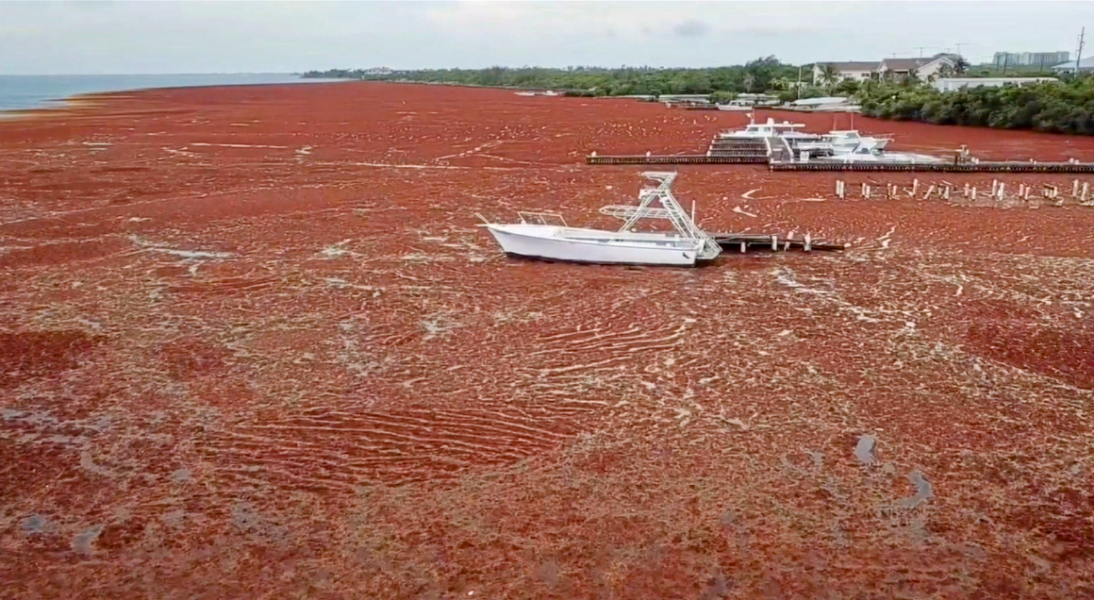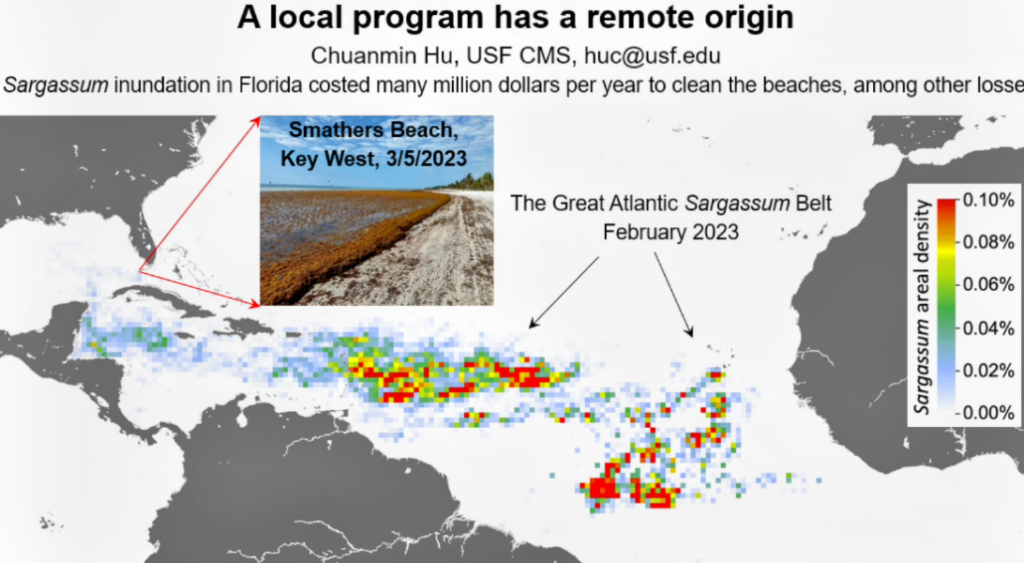Thrive
New grant will help USF pinpoint seaweed masses

A $3.2 million grant will help University of South Florida St. Petersburg researchers better forecast an annual sargassum bloom that has stumped scientists with its ever-increasing size.
The “Great Atlantic Sargassum Belt ballooned to a record 5,000 miles long and 13-million-ton “behemoth” by April, a new record. While most people refer to the mass as seaweed, it is actually the world’s largest brown algae bloom.
What began as an anomaly in 2011 had grown to twice the length of the U.S. in March. Brian Barnes, assistant research professor and physical oceanographer at the College of Marine Science, said the funding will help pinpoint what beaches can expect an inundation and provide an early-warning detection system.
“This is looking at an individual small patch,” Barnes said. “Small by the scale of the entire bloom, but a patch that might have an impact on a particular beach.”

Sargassum often washes ashore in the Florida Keys in May. Photo by Keara McGraw.
The National Oceanic and Atmospheric Administration (NOAA) selected USF to lead the five-year, $3.2 million initiative. The organization asked local researchers to study the floating mass in 2011, just after the first blobs washed up on Caribbean beaches.
The mass drifts between the African coast and the Gulf of Mexico, providing a rich marine habitat while absorbing carbon dioxide. However, the seaweed degrades once it reaches the shore, degrading water quality, emitting noxious odors, fostering bacteria and repelling tourists.
Barnes, the project’s principal investigator, noted it can also smother critical habitats like coral reefs and seagrass beds. “It can be feet deep across an entire bay,” he added.
“Having an early warning, even a few days, gives you time to stage equipment,” Barnes added. “Get your excavators, your dump trucks … and then also, perhaps, some temporary floating barriers to divert some of that biomass away and keep it offshore.”
Local researchers utilize satellite imagery and data from NASA and other government agencies to create sargassum maps and forecasting tracks. However, Barnes called the current resolution “coarse.”
He now hopes to refine the imagery and information and integrate it into a cohesive system. Including commercial tools allows scientists to observe sargassum at a finer scale, and Barnes said they could eventually provide real-time monitoring and forecasting.
“Instead of saying, ‘There is going to be bad sargassum here,’ we can say, ‘In a couple of days, this particular beach is likely to be impacted,'” Barnes explained.

A USF St. Petersburg Optical Oceanography Laboratory map. Researchers now hope to increase satellite resolution and provide more detailed forecasts. Image provided.
He noted that Florida’s west coast typically avoids extensive sargassum blooms found in the Keys, Puerto Rico, and other Caribbean islands. However, what started as a few seaweed patches has soared in size over the past 12 years.
Dr. Chuanmin Hu, professor and director of the CMS Optical Oceanography Lab, co-authored a report that found nutrient enrichment contributes to its increasing abundance. He leads efforts to understand if the extensive mass “is the new normal.”
Hu also studies its significant impacts on marine life and coastal economies. He told the Catalyst in March that “a continuous, single mat could be several miles long and 100 meters wide.”
“You don’t want to get inside if you drive a small boat,” Hu added.
In May, a Florida Atlantic University (FAU) study warned that plastic floating in the mass could carry Vibrio vulificus, or “flesh-eating” bacteria, ashore. However, most of the sargassum virtually disappeared from the Gulf by July, leaving local researchers searching for answers.
“I know you have a lot of questions,” Hu said at the time. “But unfortunately, I don’t have most answers for them.”
Although the project scopes differ, the latest funding could help provide some of those answers. USF’s CMS will receive half the $3.2 million, with FAU and three government agencies splitting the rest.
Barnes formed the team before applying for the competitive grant. Local researchers will focus on tracking water movement, while FAU and Caribbean organizations will monitor water quality.
Barnes said the St. Pete-based researchers have demonstrated their capacity to build and demonstrate similar tools, like red tide forecasts. He also noted the program’s importance, as the seaweed masses will likely continue growing.
“There are scenarios where we’ll say the Atlantic becomes too hot for sargassum to have these massive, massive blooms,” Barnes added. “But even … the down years we have now are certainly much more than we saw, certainly pre-2011, but even a couple of years into the sargassum blooms.”







